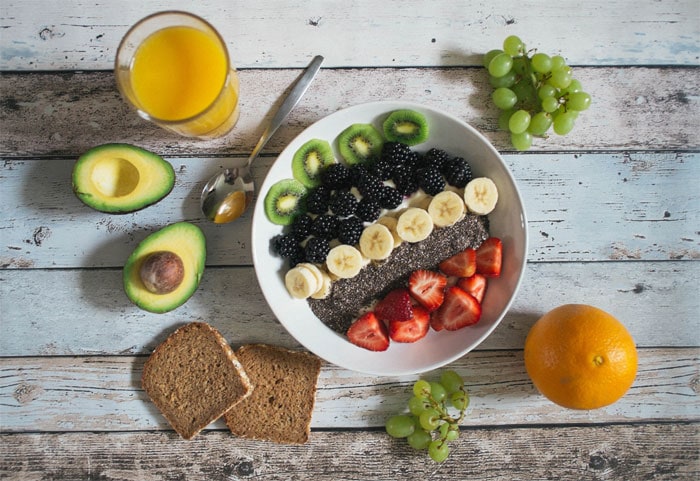
Written By: Sejal Dave, RD
Title: Registered Dietitian
Alumni: University of Florida
Last Updated on:

If you have diabetes, you may have been told to watch your diet. What exactly does this mean? It may feel like you have to watch all your favorite foods walk out of your life. This doesn’t have to be the case!
One way to manage your blood sugar and enjoy the foods you love is to be aware of the amount of carbohydrates in your meals. Carbohydrates, protein and fats all supply your body with energy. Carbohydrates affect your blood sugar the most. It’s important to know which foods contain carbohydrates and how to add them up. Counting carbohydrates (carbs) lets you eat your favorite foods and keep your blood sugar under control.

Table of Contents
One carbohydrate serving is equal to 15 grams of carbohydrate. For example, one slice of bread, one medium apple, and one cup of milk each equal one carb. If you eat just these three foods for breakfast, your carb intake would be 45 grams (15×3). Here’s another example: you eat a peanut butter and jelly sandwich with a small banana and a cup yogurt for lunch. Can you spot the carbs?
Here’s a breakdown:
One Carb (15 g) =:
Everyone’s calorie and carbohydrate needs are different. It’s important to eat the same amount of carbohydrates at each meal along with a moderate amount of protein and a limited amount of fat, to keep your blood sugar levels at acceptable levels. If possible, meet with a dietitian to create an individualized meal plan. For most people, three to four (45-60 grams) of carbs are recommended per meal. The key is to keep your carbohydrate intake consistent at each meal on a regular basis.
The serving size for a particular food is listed at the top of the nutrition facts label. The serving size will vary depending on the food, even if the items are from the same food group. Once you know the serving size, locate the total carbohydrates on the label. This value includes sugar, fiber, and other carbs that the food may contain. The total carbohydrate amount is the number to look for. Looking at the sugar grams alone will give you an incomplete picture.
You don’t have to eat the same foods everyday to maintain good blood sugar control. A variety of foods are recommended to obtain all the vitamins, minerals, and nutrients your body needs. It would be really boring to eat the same things everyday. Get to know your carbs and the serving sizes that are equal to 15 grams. Then read food labels to help plan your meals. Remember, you aren’t watching your favorite foods walk out the door. They can still be a part of your life!
Alumni: University of Florida – Sejal is a registered dietitian, a certified diabetes educator and she holds a masters degree in nutrition and health. Sejal was the project coordinator for the Veteran’s Administrations (VA) national weight loss program and previously worked for the VA hospital in Tampa, FL as a Spinal Cord Injury dietitian.
Sejal has had numerous clinical and community education experiences, including pediatric and intensive care nutrition support. She has also had the opportunity to teach nutrition courses at the community college level to students interested in pursuing health professions. One of her favorite areas of education is diabetes management.
carbohydrate, diabetes, diabetes diet